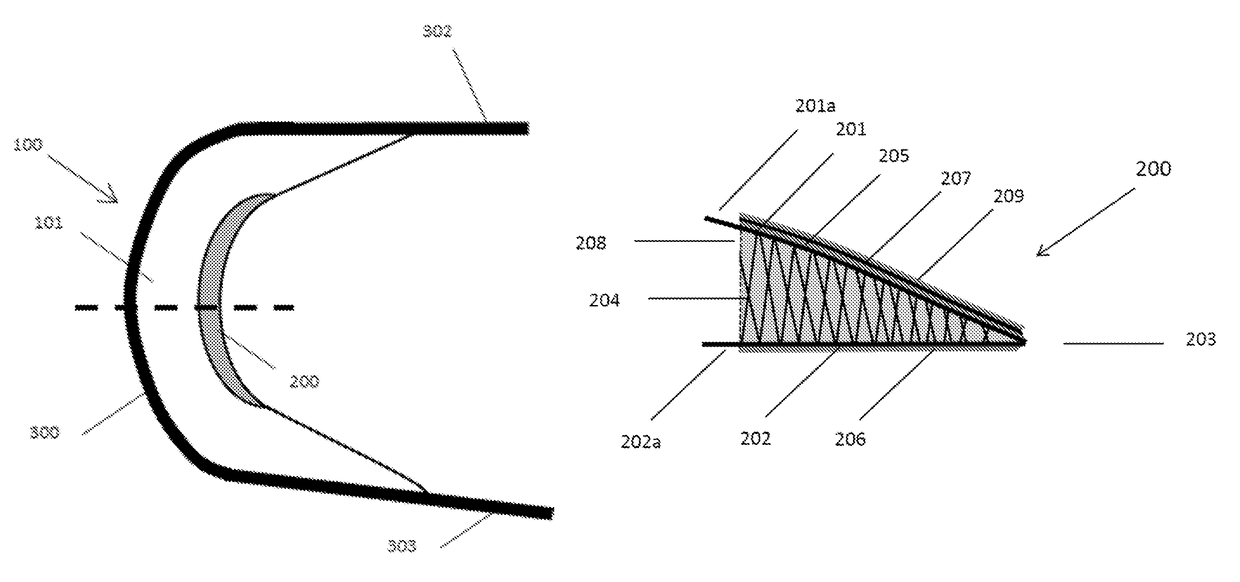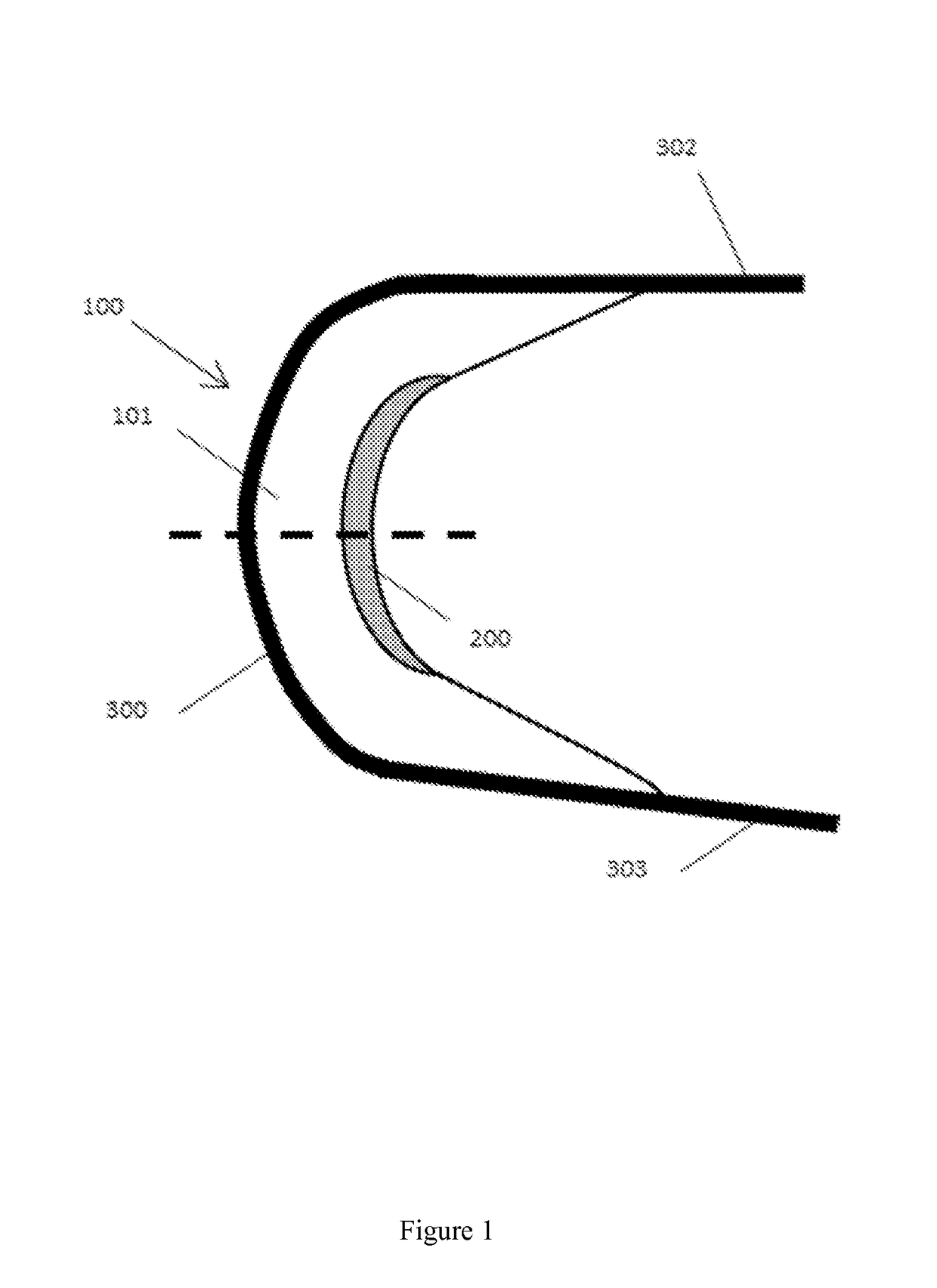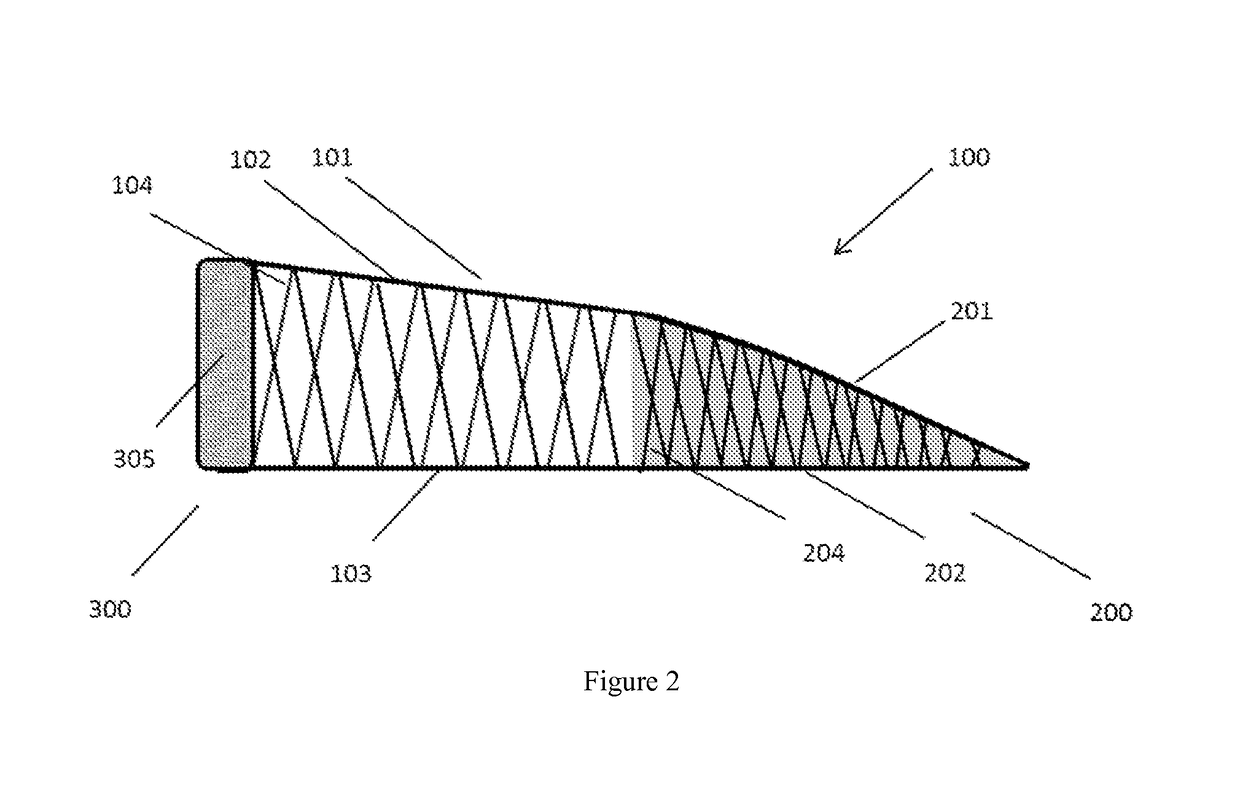Anatomically designed meniscus implantable devices
a technology of implantable devices and meniscus, which is applied in the field of implantable devices, can solve the problems of reduced mechanical strength, reduced mechanical strength, and reduced durability of synthetic biodegradable scaffolds under knee loading conditions, and achieves compressive recovery, compressive strength, and resiliency.
- Summary
- Abstract
- Description
- Claims
- Application Information
AI Technical Summary
Benefits of technology
Problems solved by technology
Method used
Image
Examples
embodiment 1
[0046]An implantable device for repairing or replacing a knee meniscus of a human or animal patient in need thereof, comprising:
a biocompatible non-resorbable three-dimensional body, comprising:
[0047]a central body having a substantially crescent shape and comprising a top surface and a bottom surface integrally connected, separated, and reinforced by a first plurality of vertical elements, and[0048]a minor arc and a major arc defined by the first plurality of vertical elements and the top surface and the bottom surface;[0049]a second structure having a substantially crescent shape conforming to and proximal to the minor arc of the central body, the second structure comprising a first surface and a second surface integrally connected, separated, and reinforced by a second plurality of vertical elements, and the first surface and the second surface form an inner edge distal from the minor arc of the central body;[0050]a third structure conforming to and proximal to the major arc of t...
embodiment 2
[0052]The implantable device according to embodiment 1, wherein the central body, second structure, and third structure form a singular construct.
embodiment 3
[0053]The implantable device according to any one of embodiments 1-2, wherein the second structure has a substantially wedge-shaped cross-section.
PUM
 Login to View More
Login to View More Abstract
Description
Claims
Application Information
 Login to View More
Login to View More - R&D
- Intellectual Property
- Life Sciences
- Materials
- Tech Scout
- Unparalleled Data Quality
- Higher Quality Content
- 60% Fewer Hallucinations
Browse by: Latest US Patents, China's latest patents, Technical Efficacy Thesaurus, Application Domain, Technology Topic, Popular Technical Reports.
© 2025 PatSnap. All rights reserved.Legal|Privacy policy|Modern Slavery Act Transparency Statement|Sitemap|About US| Contact US: help@patsnap.com



